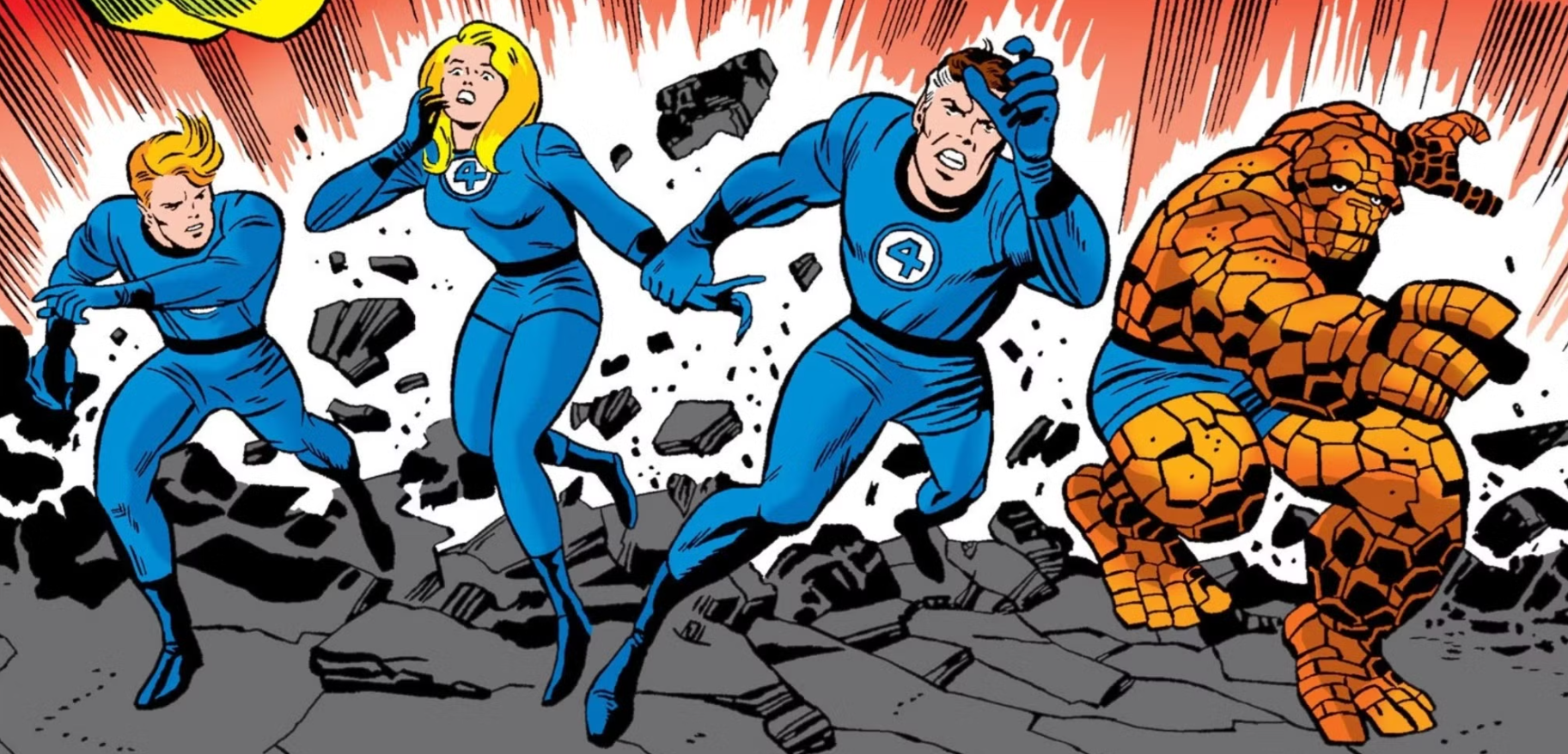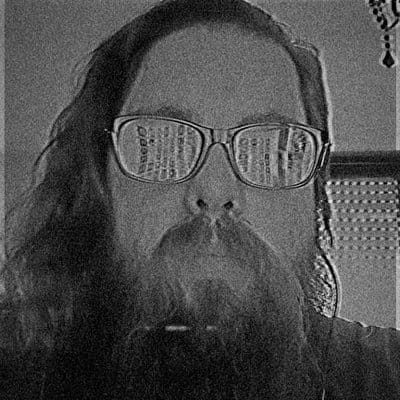
In the 1960s, Marvel went wild. Stan Lee –editor-in-chief back then, writer, charismatic front man, and notorious credit hog– had the good fortune of crossing paths with artists like Steve Ditko and Bill Everett, co-creating Spider-Man, Doctor Strange, and Daredevil. But there's one name that makes deep-dive fans light up just by saying it: Jack Kirby. In the '60s he was like Maradona in '86 or Jordan in the '90-'91 seasons –pure magic. Among his many creations, the Fantastic Four kicked off Marvel's golden age and the legacy we're celebrating here with this reading guide.
Who are The Fantastic Four?
Their origin is famous –parodied to death– and seems to be the only thing many people remember. In their debut, published in November 1961 in The Fantastic Four #1, four astronauts head "to the stars", testing a rocket designed by project lead Reed Richards. The rest of the crew: Ben Grimm, pilot and Reed's best friend, and Sue and Johnny Storm, Reed's wife and brother-in-law. Exposed to cosmic rays, the prototype craft fails. After an emergency landing back on Earth, they discover those rays changed them forever.

A quick power rundown –and what each member represents. Reed Richards is a scientific genius who would become one of the smartest minds in the Marvel Universe. His intellect isn't from the accident; the cosmic rays gave him elasticity –he can stretch and reshape his body. It may sound like a lesser power, but writers have used it brilliantly in daily life and in combat.
Sue Storm, Reed's wife, can turn invisible by bending light and, over time, learned to create force fields; her super-power in the team is often plain common sense.
Johnny Storm –the Human Torch and Sue's brother– controls fire and can ignite at will, making him one of the team's heavy hitters. Over time we see Johnny as an eternal, insufferable teen, but also pure charisma and rebellion.
Last, Ben Grimm suffers the most: his body mutates into the orange rock golem we know as The Thing. He becomes a "monster", yet remains the team's most human link, with a dramatic arc about understanding and accepting himself. He's the group's strongest member and another bruiser in a fight: Ben stood up to the Hulk and lived to tell the tale.

That's the Fantastic Four –here to save humanity from huge threats, and just as importantly, to go adventuring in the name of science and discovery. As those adventures unfolded, their pages introduced key figures like Doctor Doom (FF #5, 1962), Galactus and Silver Surfer (FF #48–50, 1966), the Inhumans (FF #45, 1965), and Black Panther (FF #52, 1966). Namor didn't debut in FF –he's from 1939– but he was reintroduced in FF #4 (1962).
The trick with starting Fantastic Four is that their stories lean closer to science fiction than to capes-and-punches superheroics. So here are some on-ramps if you've never read them.
The Fantastic Four #1, #5 and #48-50 (1961)
Start at the beginning. Jack Kirby and Stan Lee left an immortal legacy with their Fantastic Four run. The foundation Kirby laid in the first 50–60 issues is Scripture for anyone tackling new arcs. Since reading all the '60s is tough, here are three essentials.

The Fantastic Four #1 (1961): the First Family of Marvel arrives. The dazzling origin of Reed, Sue, Johnny, and Ben reframed superheroes by centering family dynamics and personal problems alongside epic, pulp-y sci-fi adventure.

The Fantastic Four #5 (1962): Doctor Doom enters –the Marvel Universe's most complex, mesmerizing villain– kick-starting his rivalry with Reed and the family. All hail Doom.

The Galactus Trilogy (Fantastic Four #48-50, 1966): the pinnacle of the American comics novel –the arrival of world-eater Galactus and his herald, Silver Surfer. A before-and-after moment for the medium.
Fantastic Four 1234 (2001)

Grant Morrison teams with Jae Lee to probe the team's essence, digging into their darker, more complicated sides. Each member faces inner demons as the ever-enigmatic Doctor Doom stirs their fears and desires to break them from within.

Reed pulls between logic and emotion; Sue rethinks her role and relationship; Johnny confronts his impulsiveness; Ben questions his humanity. Morrison honors the myth's bedrock and subjects it to rupture to forge them stronger, while Jae Lee unfurls spectacular art on every page.
The Trial of Reed Richards, Fantastic Four #262 (1984)

John Byrne –one of Marvel's most influential storytellers–delivers a tale that fuses cosmic scale with moral stakes. Reed stands trial for saving Galactus's life, arguing even a world-eater merits a shot at redemption.

The trial functions as a reflection on law, justice, and the limits of Reed's idealism. With cosmic witnesses and his teammates' passionate defense, the story reaffirms the FF's core responsibility and values.
The Fantastic Four - Unstable Molecules (2003)

Set in the 1950s –before the world knew the heroes they'd become– this Eisner-winning miniseries imagines how they might have been in a realistic world, without powers or cosmic villains. Reed researches "unstable molecules" and their potential for humanity –so absorbed he forgets to host a university party where he'll run into Ben Grimm. Susan wrestles with her own ambitions, home life, her role as a mother figure to Johnny, and her relationship.

Written by James Sturm with art by Guy Davis, it's a surprisingly down-to-earth take on the First Family. A "what if?" begging for an adaptation.
Fantastic Four (2009-2012)

If you've made it here, you really love this quartet –this is advanced-level reading. Jonathan Hickman pushes past known limits, building celebrated new lore. Over more than three years, Reed founds the Future Foundation, dedicated to solving the universe's hardest problems –expanding the family and its collaborative core.
Expect multiversal travel, interdimensional wars, a spotlight on Franklin and Valeria, and the death of one of the originals (Johnny). Hickman doesn't leave a single Kirby commandment unexplored, bent, or broken. It's a 10/10 run –best tackled after the key classics (and complemented by the sister title FF from the same period).

That's the guide for non-readers. Hope you enjoy the Fantastic Four and dive into a universe packed with adventures and unforgettable characters like Doctor Doom, who –if you ask me– is Marvel's finest.

